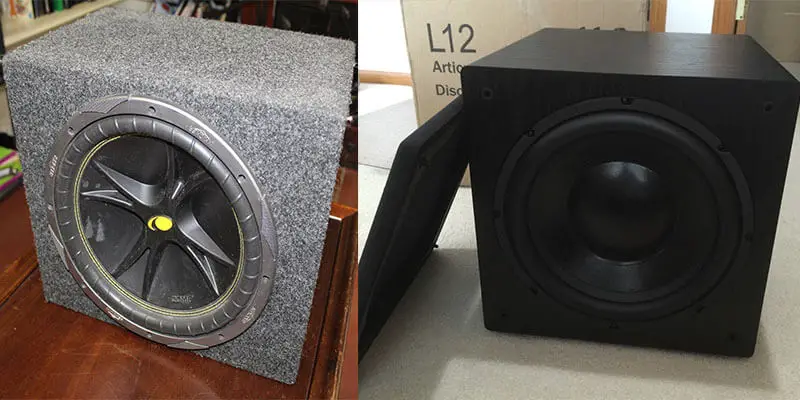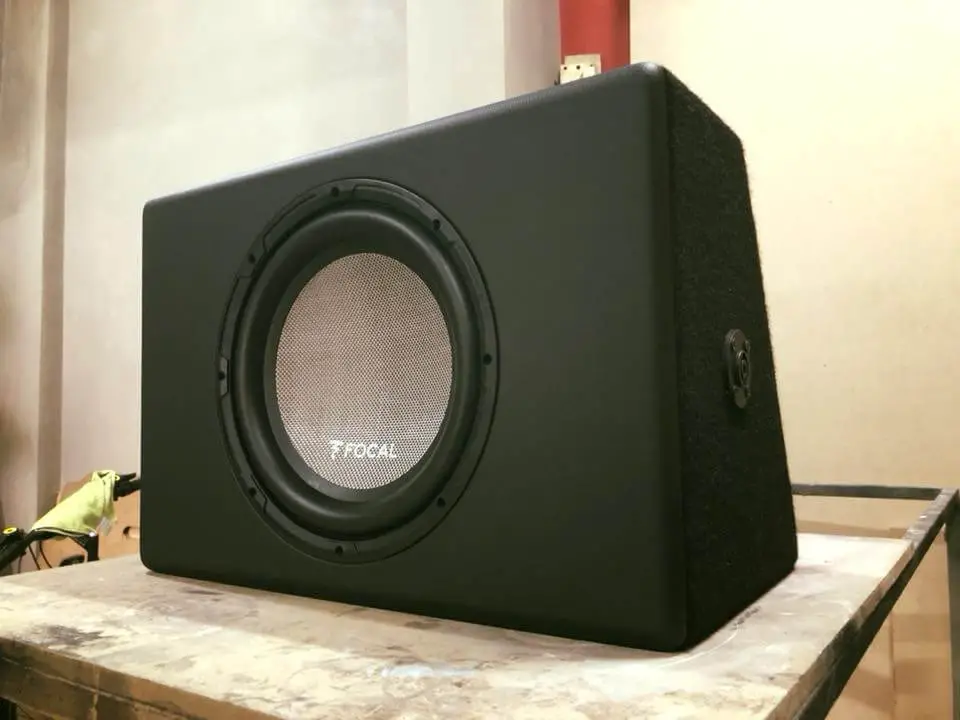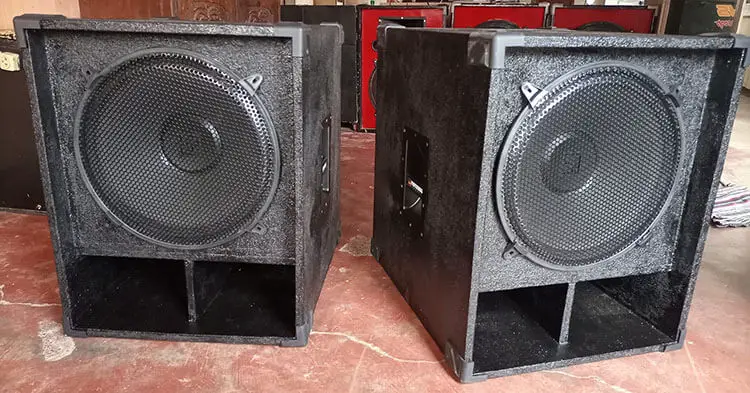As an enthusiast or someone who wants to create a setup, there are specific criteria to get a good subwoofer. You first need to identify if your setup is a room setup or a home theater setup, as your devices will vary significantly in accordance with that. The generic criteria to fill for a subwoofer Soundqualty, Size, Frequency, and room calibration. Also, if you’re a fan of wireless, then that should also be a priority.
In terms of which is better between the two, well then that depends on you. I’ll be your guide to clarify your decision because you may have gotten the wrong subwoofer.
Ported or Sealed Subwoofer: Which one is better?

In my opinion, it all comes down to the size of the room. If you are someone who has a small space, then it is quite evident for you to get a Sealed subwoofer. That tiny room will give just the right clean, punchy, and accurate music without missing any sort of information.
It also might vary depending on the content you consume as well. If you’re a fan of Skrillex, which is all about extremely loud bass, then you may need to consider getting a ported subwoofer, even in a small room. And, as for a home theater setup, then it is wiser to get a ported subwoofer because to get that room-filling bass and more output, you may require multiple sealed subwoofers.
As we move ahead, I will go into more specifics and talk about a few technical terms so that you understand your needs for a subwoofer.
What are the key differences between Ported and Sealed Subwoofer?
I have mentioned (+ve) and (-ve) as a way to address which is better or worse. +ve is Positive and -ve is negative. And the ones that don’t have anything mentioned are subjective to people and their setups.
Cleaner music with Transient Response

In short, transient response means the music stops and starts without any stutters or jitters in the bassline. A song may have many different notes, and a Transient Response is required to catch all of those notes at an optimum equilibrium level.
Sealed Subwoofer (+ve): The cleanest and tightest music is gotten from the sealed subwoofer because of its ability to accurately produce all the bass notes to produce the “musical” quality.
Ported Subwoofer (-ve): If you’re listening to heavy bass line music, a ported subwoofer will mix up all the bass notes and produce an inaccurate, sloppy sound.
Note: The difference in transient response in the modern ported subs with the sealed one has decreased and is relatively difficult to notice due. But it is still not the same. SVS subwoofers have gone quite close.
Low-Frequency Extension
It basically is a feature where the subwoofers can essentially play at the lowest hertz possible to find out the most detailed information, which is referred to as the subsonic bass, a low-frequency extension is required for it. In many movies and games, there are incredibly detailed music and bass that contains a lot of information that any music fanatic would kill to experience.
Sealed Subwoofer (-ve): An average sealed subwoofer is usually filtered out up to 24hz when it comes to the lowest frequency. That leads to missing out on a lot of musical information.
Ported Subwoofer (+ve): But a ported subwoofer can go all the way down up to 10hz when it comes to its lowest frequency. An average sealed subwoofer will be in awe over the details they have missed out on after experiencing the low-frequency extension of a ported subwoofer.
Bass Roll-Off
Now that we know that specific subwoofers are capable of Low-frequency extension, what happens to the volume aspect of it. The low frequency is required to have a slow and clean transition of volume, not a sudden change in the volume, which would cause distortions.
Sealed Subwoofer (+ve): It doesn’t have a sudden decline in volume, but it has a very slow processing decline in volume that doesn’t cause any distortion.
Ported Subwoofer (-ve): Because of its larger enclosure, there is a sudden contrast in volume and the flatness decline. So, the volume is bound to lose some steam.
Room and the subwoofer’s Size
The room size has to be the most important for you before getting a subwoofer. As you put your system into a larger room, the demand for bass will also increase because the dynamic range needs to correspond with the bass. If the subwoofer isn’t capable of producing the quality in accordance with the room, then either a change in subwoofers is required or may need to be more than one.
Small Rooms (Sealed +ve)
- If you are concerned about the size of your subwoofer, then sealed subwoofers are your thing because it compact as well as can produce crisp, loud music for your small space. There are 12-inch drivers installed in a 13×13-inch box. A minimalist will never choose a ported speaker because of its aggressive look and large size.
- And for a small room, a sealed subwoofer that covers only a portion of your room is just the right thing, whereas putting a ported subwoofer will produce an absurd amount of bass, which is too large for the room and will give you a very unpleasant experience.
Large Rooms and home theaters (Ported +ve):
Similarly, for a home theater setup or if your room is too large, then the obvious choice is a ported subwoofer given its ability to generate more power and bass. For a sealed subwoofer to perform similarly, then it will affect its life span as the volume always needs to be cranked at the maximum along with your amplifier will be overused.
Music Genre
A nice way to identify the difference between these two subwoofers is by listening to various genres of music. It is mainly because different genres have different highs, mids, and lows, along with the difference in bass notes.
Ported Subwoofers: For any sort of electronic music that is bass heavy and has a lot of subsonic frequencies that are below 25 Hz. Genres like EDM, Rap, Heavy Metal, and Techno will show you the value of ported subwoofers.
Sealed Subwoofers: For that crystal clear, not so bass heavy, acoustic and jazz experience you require a sealed subwoofer. Genres like Blues, Classical, Country Music, and jazz will let you comprehend the sweetness of a sealed subwoofer.
More Output
Since you’re a technophile, you obviously have the urge to crank up your system to its absolute peak without causing any sort of harm. Having a sealed subwoofer will put you in a filtered state as it’ll only operate up to a certain degree.
Ported Subwoofer has more output
But, if you have a ported subwoofer it generally has more output. Given the max output you’d get from your sealed subwoofer by putting pressure on the amplifier, you would probably get the same output from a ported subwoofer while not putting pressure on your amplifier along with having more space to crank up your volume.
Busting the myth: Sealed subwoofers are not as good as ported Hometheater systems.

While it may seem that ported subwoofers are the perfect choice for home theater systems but that doesn’t mean that sealed subwoofers are bad for it. In fact, if you have a sealed subwoofer, then you can accommodate it with your setup.
You need to make sure that the room size, playback capabilities,, gain, and dynamic range aligns with the output capabilities of the sealed subwoofer. Who knows, you may even face a better experience given that your room isn’t that big and you have more than one sealed subwoofer attached to your home theater system.
Comparison At a Glance
Here’s a small table for you to understand everything I have said so that you easily understand the significance between the two subwoofers.
| Remarks | Sealed Subwoofer | Ported Subwoofer |
| Which one has Cleaner and Tighter Music | Yes | No |
| Which one is best for low frequency | No | Yes |
| Which one is more bass-heavy | No | Yes |
| Which one is best for small rooms | Yes | No |
| Which one is more suitable for home theaters | No | Yes |
Note: Make sure you purchase at such a place where there is a suitable replacement and return policy because you may require to change it if it doesn’t suit your needs. Especially if you get a ported subwoofer, those are more expensive.
How do you identify a ported and sealed subwoofer?
After knowing all the specifics and their key features, you can now wonder how you identify them.
Sealed Subwoofer: It is small in shape. The cabinet is airtight with the woofer installed in it with no tubes or holes for the air to get out.
Ported Subwoofer: The key identifier is that there’s an opening in the cabinet, it is more often than not a tube, sometimes more than one tube. The size is usually a bit larger than a sealed subwoofer.
Frequently Asked Questions
If I am on a budget then what should I buy?
If you’re on a budget and you don’t have enough space in your room, then it is best if you get a Sealed subwoofer because it is difficult to get a ported subwoofer that is suitable to your room size.
What is Chuffing?
Chuffing is the way to identify if your ported subwoofer is producing a distorted sound or not. If you’re having a generic music experience, then the air that’s going in and out of the port is getting out without any pressure. Now when you start to exceed its capabilities, then the air starts to get out aggressively without its smooth flow. That is when the distortions happen.
To prevent that, you need to widen the area of the port, but that also requires you to increase the length of the port.
What is the benefit of a passive radiator in a subwoofer?
The subwoofer becomes a good alternative to a ported subwoofer. Suppose you have a home theater setup in your small room. In that case, you get a subwoofer with a passive radiator as it is small in size and will produce loud bassy noise, which is clean.
Wrap Up!
Well, this clearly has been a very long discussion. While talking, I presumed that you might be bored and that’s why I took the liberty to make a comparison table for you to understand which is suitable for what feature. Even if you want to decide at a glance that a small table might be suitable for you.
I personally am a fan of sealed subwoofers, given the small space they take along with their clean design. Not to mention its superior “musical sound quality” I would rather use multiple sealed subwoofers than a large ported subwoofer for my home theater setup even.
